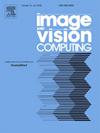RFSC-net: Re-parameterization forward semantic compensation network in low-light environments
IF 4.2
3区 计算机科学
Q2 COMPUTER SCIENCE, ARTIFICIAL INTELLIGENCE
引用次数: 0
Abstract
Although detectors currently perform well in well-light conditions, their accuracy decreases due to insufficient object information. In addressing this issue, we propose the Re-parameterization Forward Semantic Compensation Network (RFSC-Net). We propose the Reparameterization Residual Efficient Layer Aggregation Networks (RSELAN) for feature extraction, which integrates the concepts of re-parameterization and the Efficient Layer Aggregation Networks (ELAN). While focusing on the fusion of feature maps of the same dimension, it also incorporates upward fusion of lower-level feature maps, enhancing the detailed texture information in higher-level features. Our proposed Forward Semantic Compensation Feature Fusion (FSCFF) network reduces interference from high-level to low-level semantic information, retaining finer details to improve detection accuracy in low-light conditions. Experiments on the low-light ExDark and DarkFace datasets show that RFSC-Net improves mAP by 2% on ExDark and 0.5% on DarkFace over the YOLOv8n baseline, without an increase in parameter counts. Additionally, AP50 is enhanced by 2.1% on ExDark and 1.1% on DarkFace, with a mere 3.7 ms detection latency on ExDark.
RFSC-net:低照度环境下重新参数化的前向语义补偿网络
尽管目前的探测器在光线充足的条件下表现良好,但由于物体信息不足,其准确性会下降。为解决这一问题,我们提出了重新参数化前瞻语义补偿网络(RFSC-Net)。我们提出了用于特征提取的重参数化残余高效层聚合网络(RSELAN),它整合了重参数化和高效层聚合网络(ELAN)的概念。它在关注同维度特征图融合的同时,还结合了低层次特征图的向上融合,增强了高层次特征中的详细纹理信息。我们提出的前向语义补偿特征融合(FSCFF)网络减少了高层语义信息对低层语义信息的干扰,保留了更精细的细节,从而提高了弱光条件下的检测精度。在低照度 ExDark 和 DarkFace 数据集上的实验表明,与 YOLOv8n 基线相比,RFSC-Net 将 ExDark 的 mAP 提高了 2%,将 DarkFace 的 mAP 提高了 0.5%,而且没有增加参数数量。此外,AP50 在 ExDark 上提高了 2.1%,在 DarkFace 上提高了 1.1%,而在 ExDark 上的检测延迟仅为 3.7 毫秒。
本文章由计算机程序翻译,如有差异,请以英文原文为准。
求助全文
约1分钟内获得全文
求助全文
来源期刊

Image and Vision Computing
工程技术-工程:电子与电气
CiteScore
8.50
自引率
8.50%
发文量
143
审稿时长
7.8 months
期刊介绍:
Image and Vision Computing has as a primary aim the provision of an effective medium of interchange for the results of high quality theoretical and applied research fundamental to all aspects of image interpretation and computer vision. The journal publishes work that proposes new image interpretation and computer vision methodology or addresses the application of such methods to real world scenes. It seeks to strengthen a deeper understanding in the discipline by encouraging the quantitative comparison and performance evaluation of the proposed methodology. The coverage includes: image interpretation, scene modelling, object recognition and tracking, shape analysis, monitoring and surveillance, active vision and robotic systems, SLAM, biologically-inspired computer vision, motion analysis, stereo vision, document image understanding, character and handwritten text recognition, face and gesture recognition, biometrics, vision-based human-computer interaction, human activity and behavior understanding, data fusion from multiple sensor inputs, image databases.
 求助内容:
求助内容: 应助结果提醒方式:
应助结果提醒方式:


